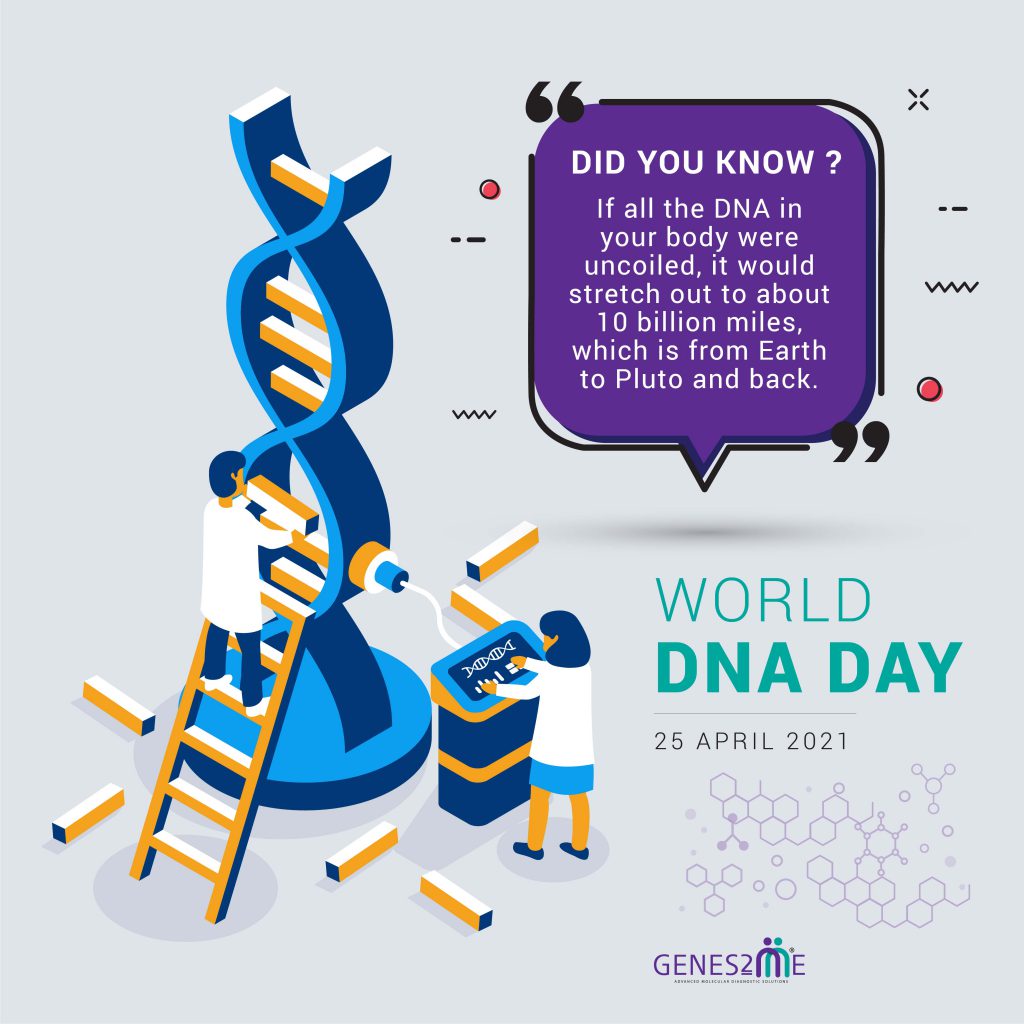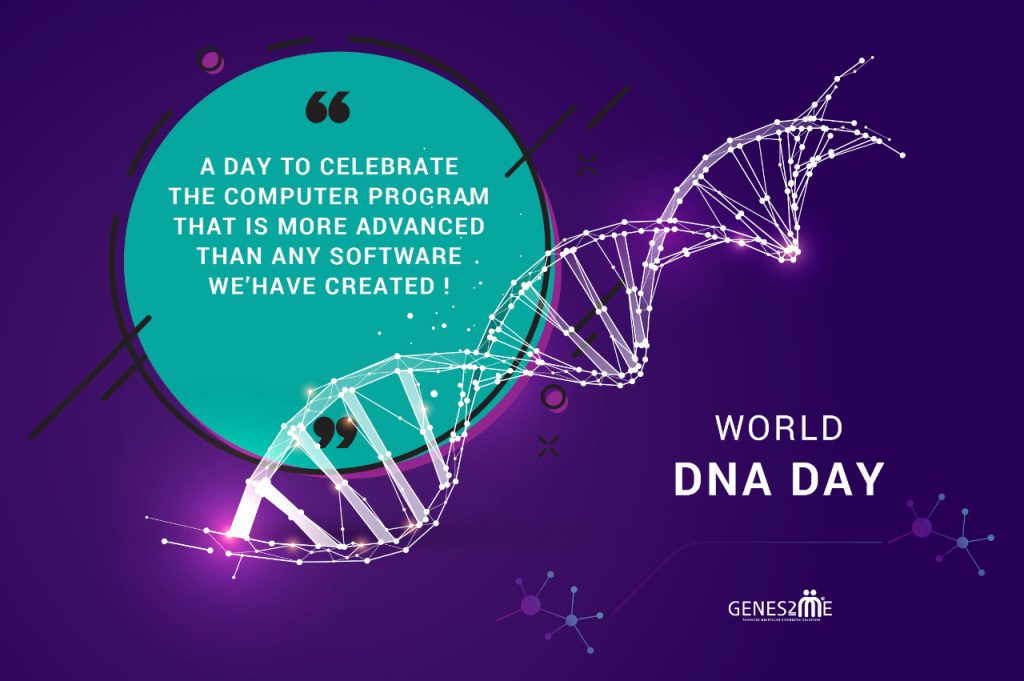World DNA Day 2021

April 25 is celebrated as World DNA Day to honour a team of scientists, James Watson, Francis Crick, Maurice Wilkins, Rosalind Franklin and colleagues, who discovered helical structure of DNA or Deoxyribonucleic acid in 1953 and also completion of Human Genome Project in 2003. Both the events are considered to be the game changer in the field of molecular biology and genetics. Let’s dive deeper in the timeline, starting from discovery of the DNA and how with each passing year, the importance of this molecule has significantly increased.
The advancements which have been achieved in the field till date by various scientists all around the world has been possible due to the understanding of this molecule, DNA which holds information that are used for the welfare of the mankind. Before the year 1953, multiple discoveries had been made starting from the Gregor Mendel’s experiment which created the understanding of inheritance, then isolation of DNA by Frederick Miescher, rediscovery of Mendel’s work by Botanists DeVries, Correns, and von Tschermak, proposal of Hardy-Weinberg Equilibrium model by G.H. Hardy and Wilhelm Weinberg, coining of term ‘genetics’ and ‘genes’ by William Bateson & Wilhelm Johannsen respectively, and many more such discoveries which took place during mid to late 19th Century.

The first study which presented the evidence of DNA was published in the year of 1871 when Friedrich Miescher published his paper identifying the presence of ‘nuclein’ (now known as DNA) and associated proteins, in the cell nucleus. 30 years later in 1904, chromosome theory of hereditary was proposed by Walter Sutton and Theodor Boveri which established that chromosomes are present in matched pairs, each inherited from the mother &father. In 1910, Albrecht Kossel won Nobel Prize for discovery of nucleotide bases (adenine, cytosine, guanine, thymine and uracil). In the year 1923, Frederick Griffith’s bacterial transformation experiment established that genetic information can be transferred and can cause pathogenicity. In the year 1941, Edward Lawrie Tatum and George Wells Beadle showed that genes code for proteins.
The year 1944 brought another evolution which marked as the starting of DNA era when through well-known Avery–MacLeod–McCarty experiment also called Transforming Principle, which proved that DNA is indeed a genetic material. This discovery was followed by Erwin Chargaff who explained the pairing of adenine, cytosine, guanine, thymine almost after 40 years later after discovery of nucleotide bases. In the year 1952, Hershey–Chase experiment demonstrated that DNA, rather than protein, carries our genetic information. In same year 1952, Rosalind Franklin along with Raymond Gosling took an X-ray diffraction image of DNA which was followed by the discovery of helical structure of DNA by James Watson, Francis Crick and Rosalind Franklin in the year 1953. Although, the work wouldn’t have been commendable without contribution of Rosalind Franklin, only Watson & Crick won Nobel Prize for this discovery. Following years established the DNA code along with different processes in which DNA is replicated, transcribed and translated. The DNA era was followed by The Genomics era in which genomic science started to emerge as a new field during late 20th Century & Early Days of 21st Century. Later the establishment of DNA sequencing technique by Sanger and Gilbert in 1970s paved the way for several studies and in 1990 The Human Genome project was launched.
Now we are living in the post-genomics era. After the completion of Human Genome project in 2003, our grasp in understanding genetic diseases has become significantly stronger than before but still so many things are yet to be understood. Along with the discoveries, developments in technologies have served a great purpose to mankind. Knowing that the technology is available to detect something unknown which can be genetic and help in making clinical decisions for the welfare of people who are suffering also raises hope that we are striving towards disease free world.
